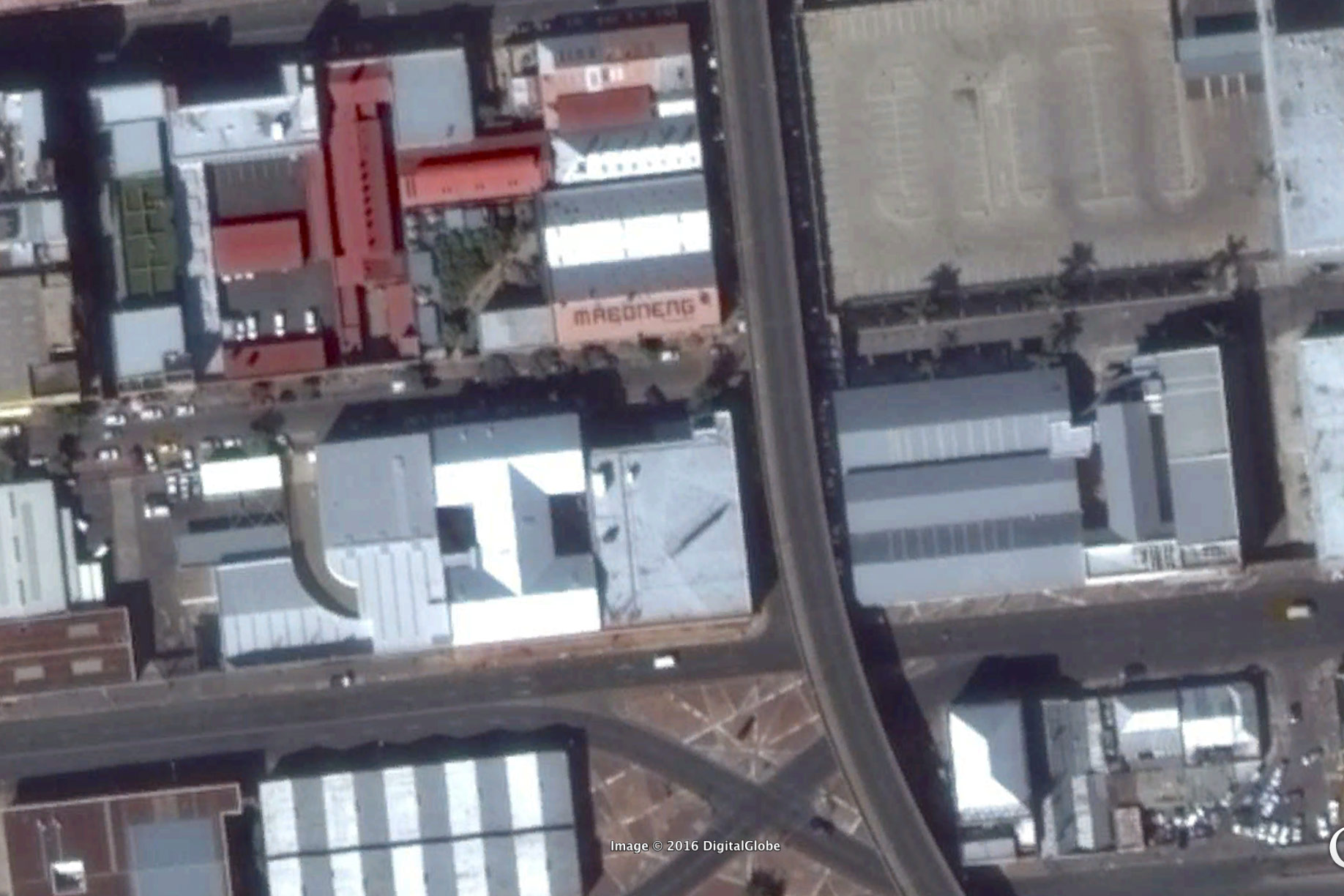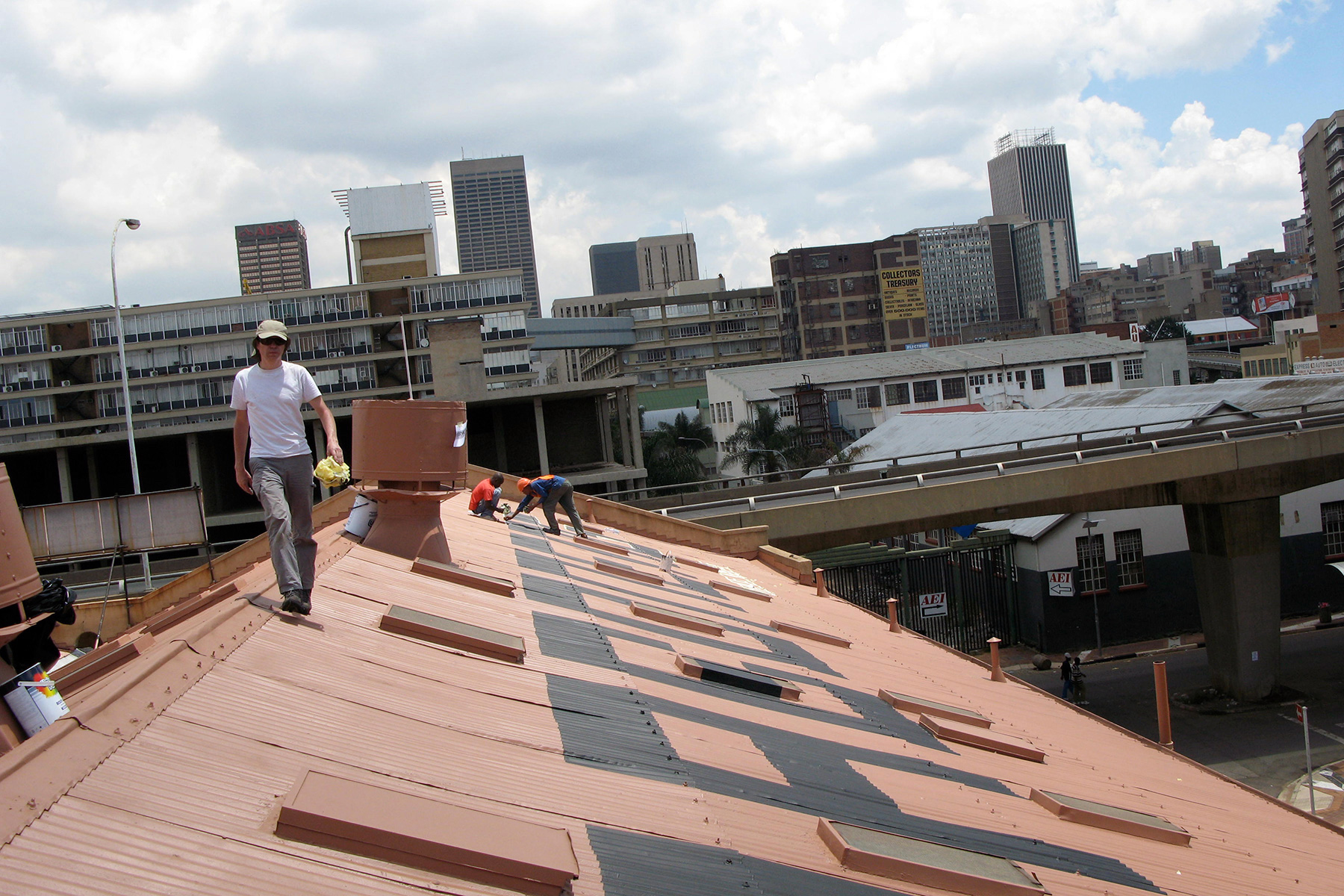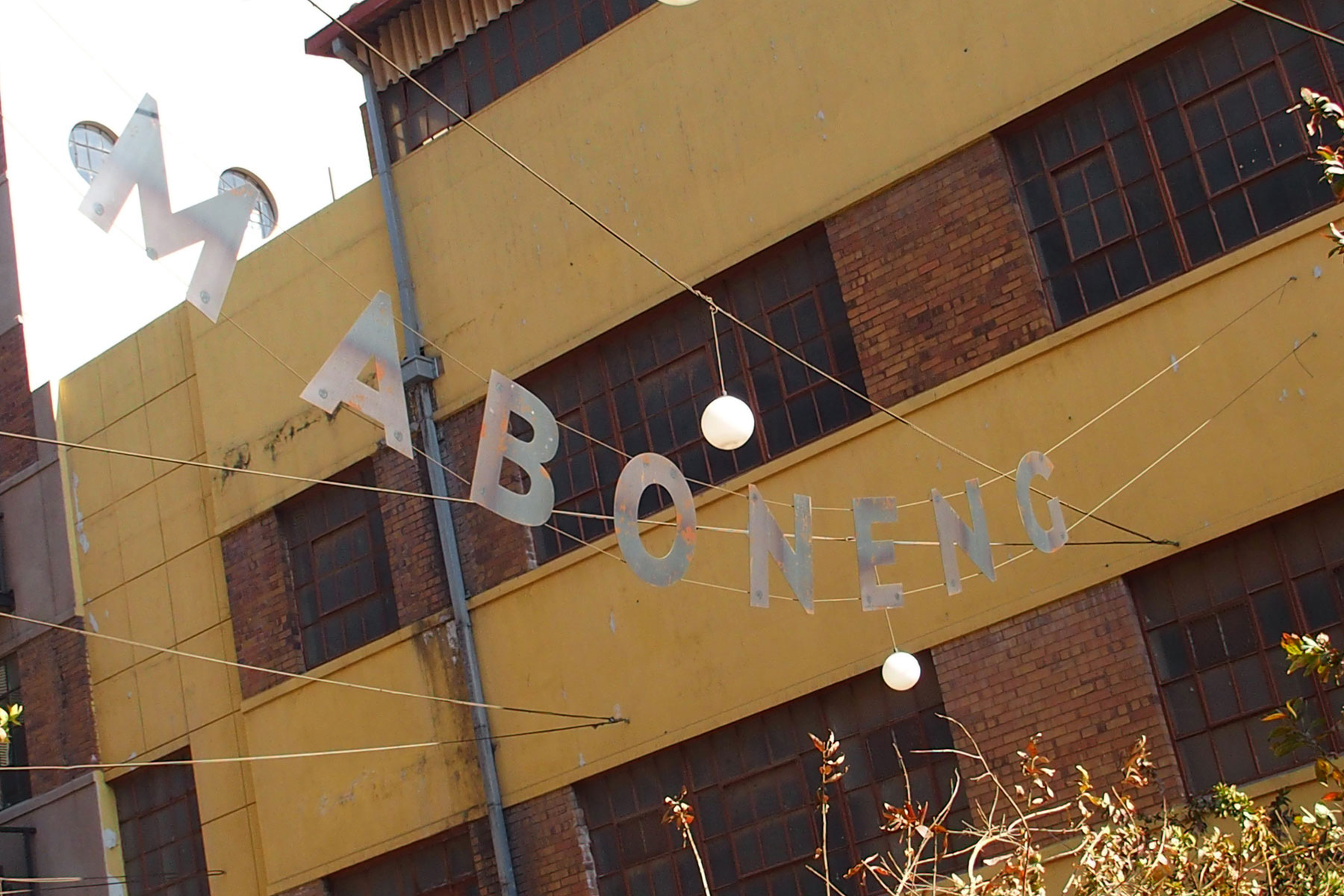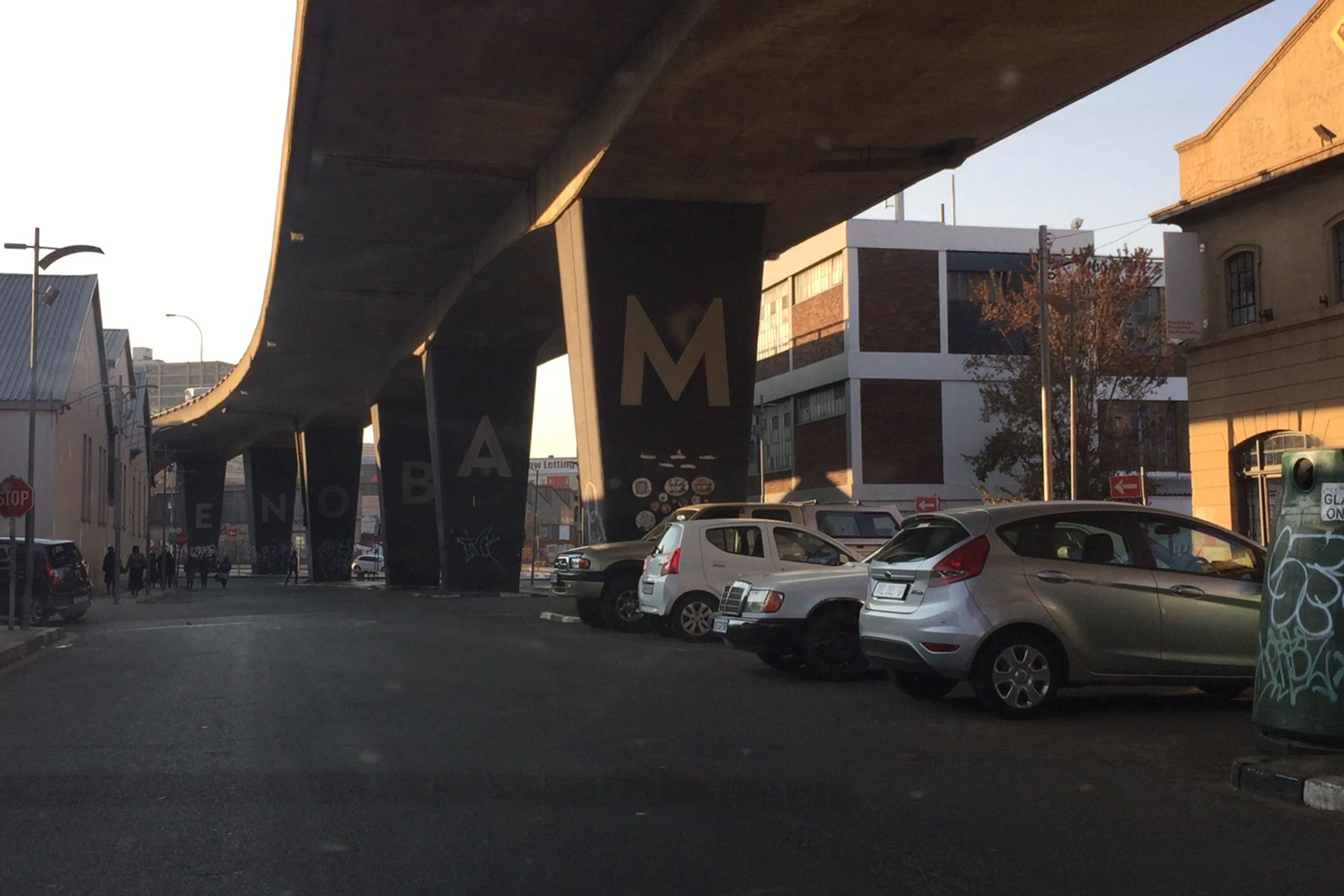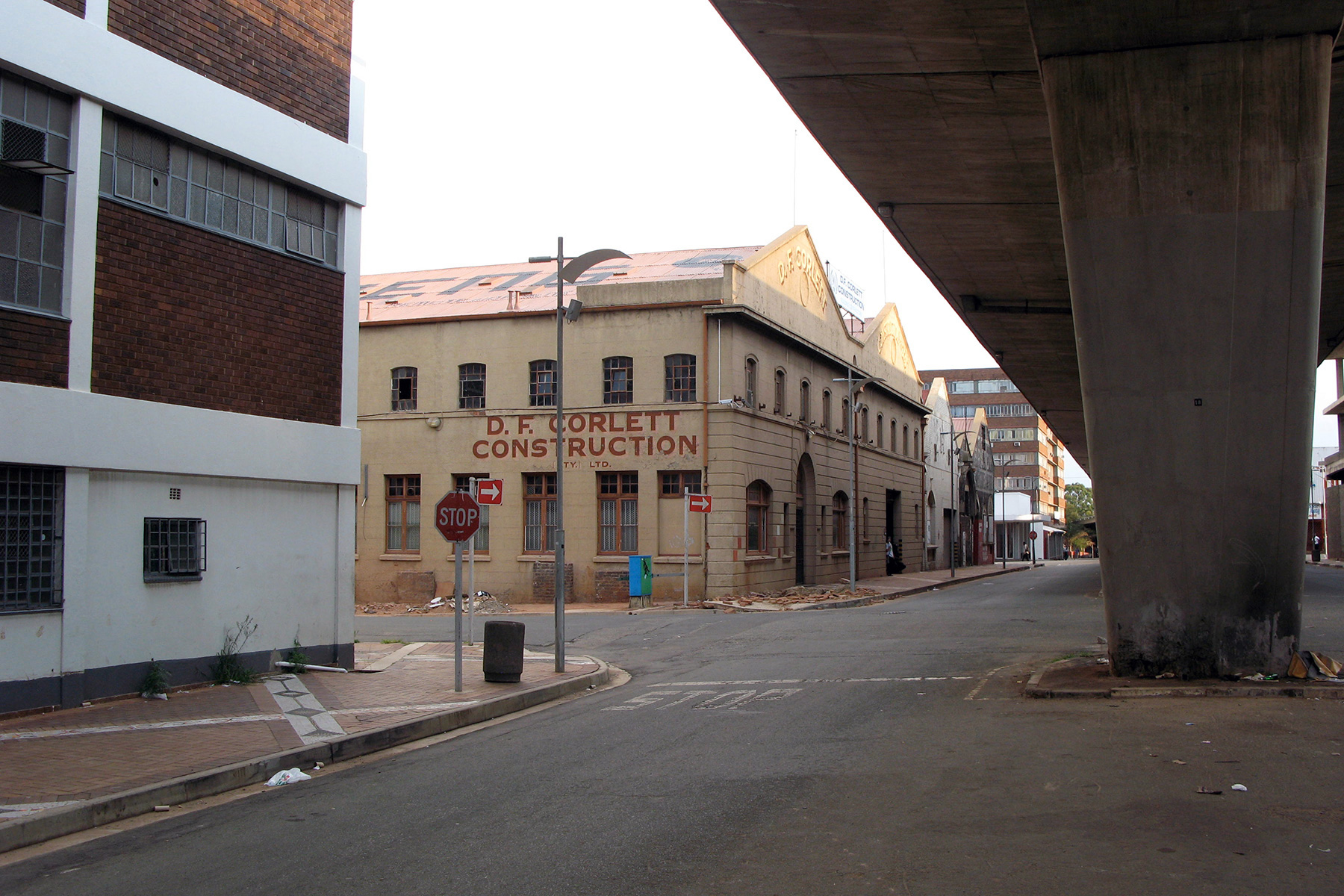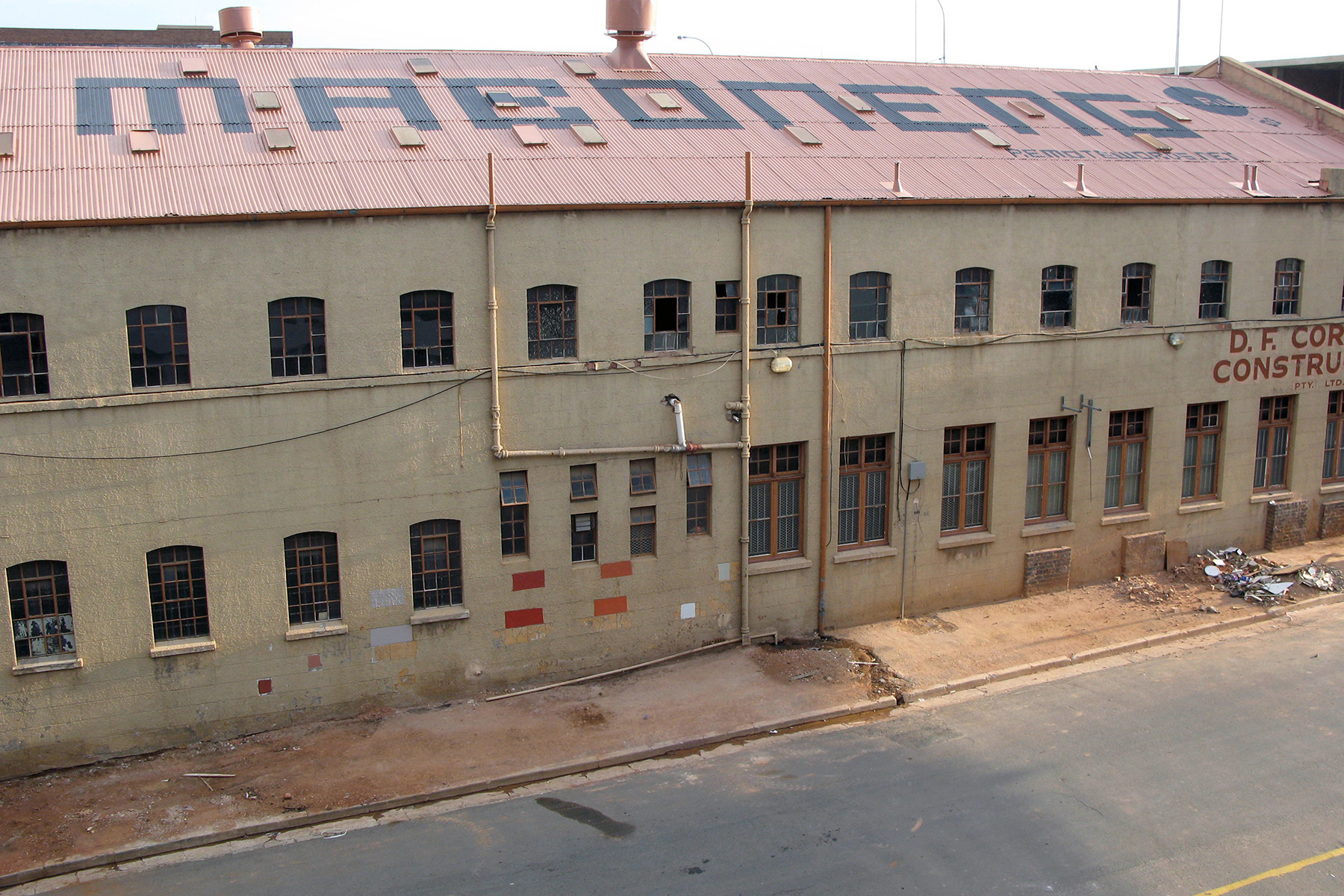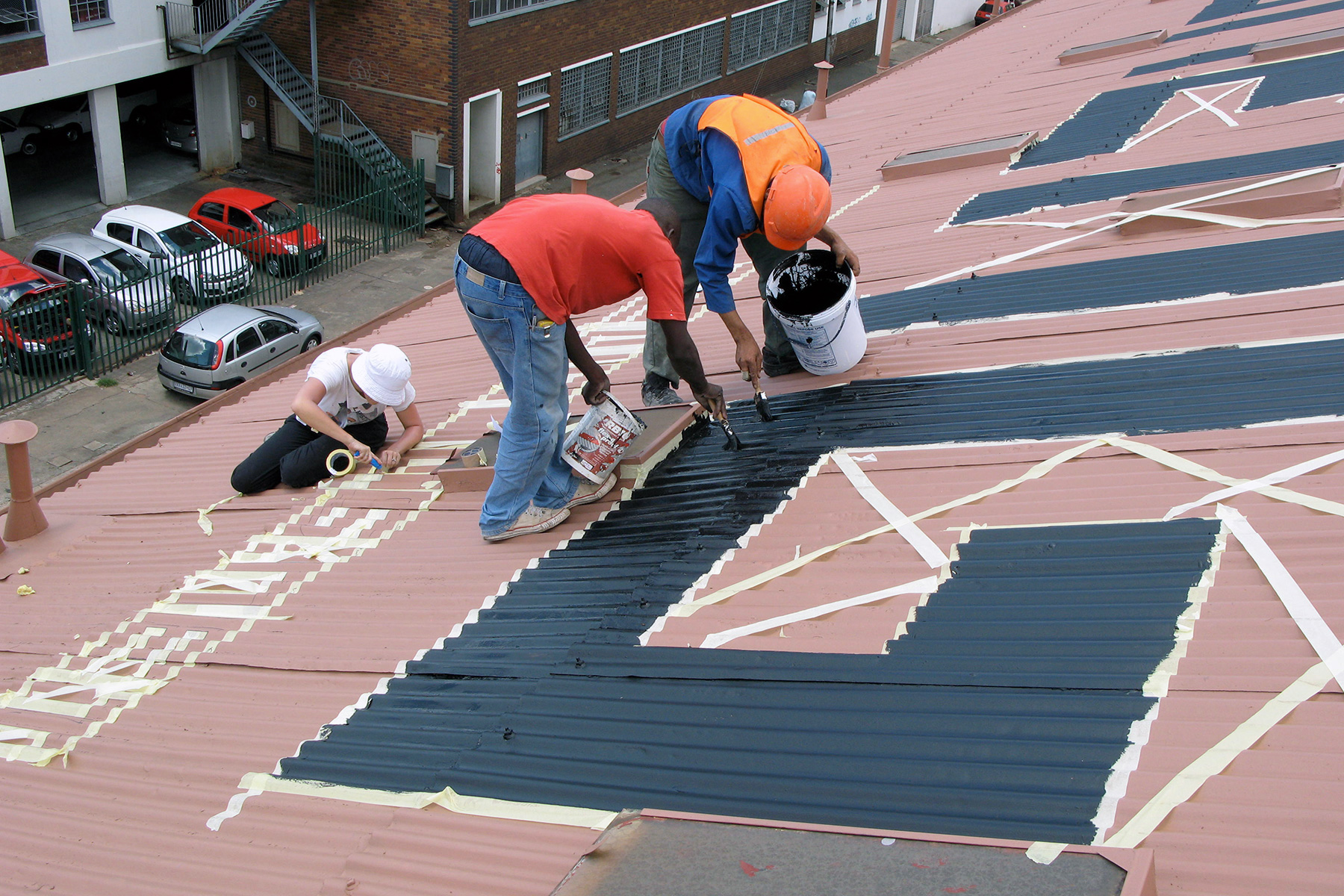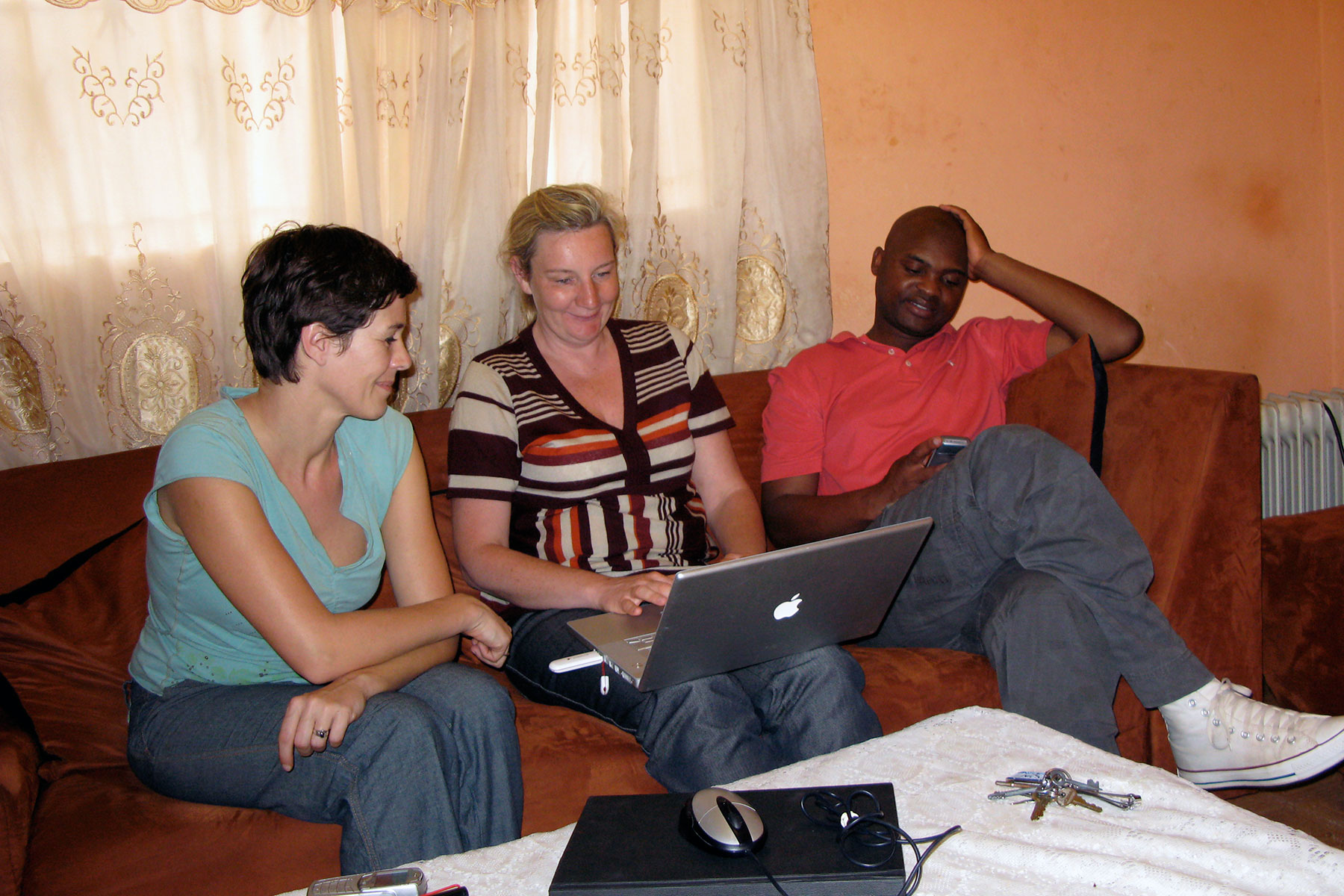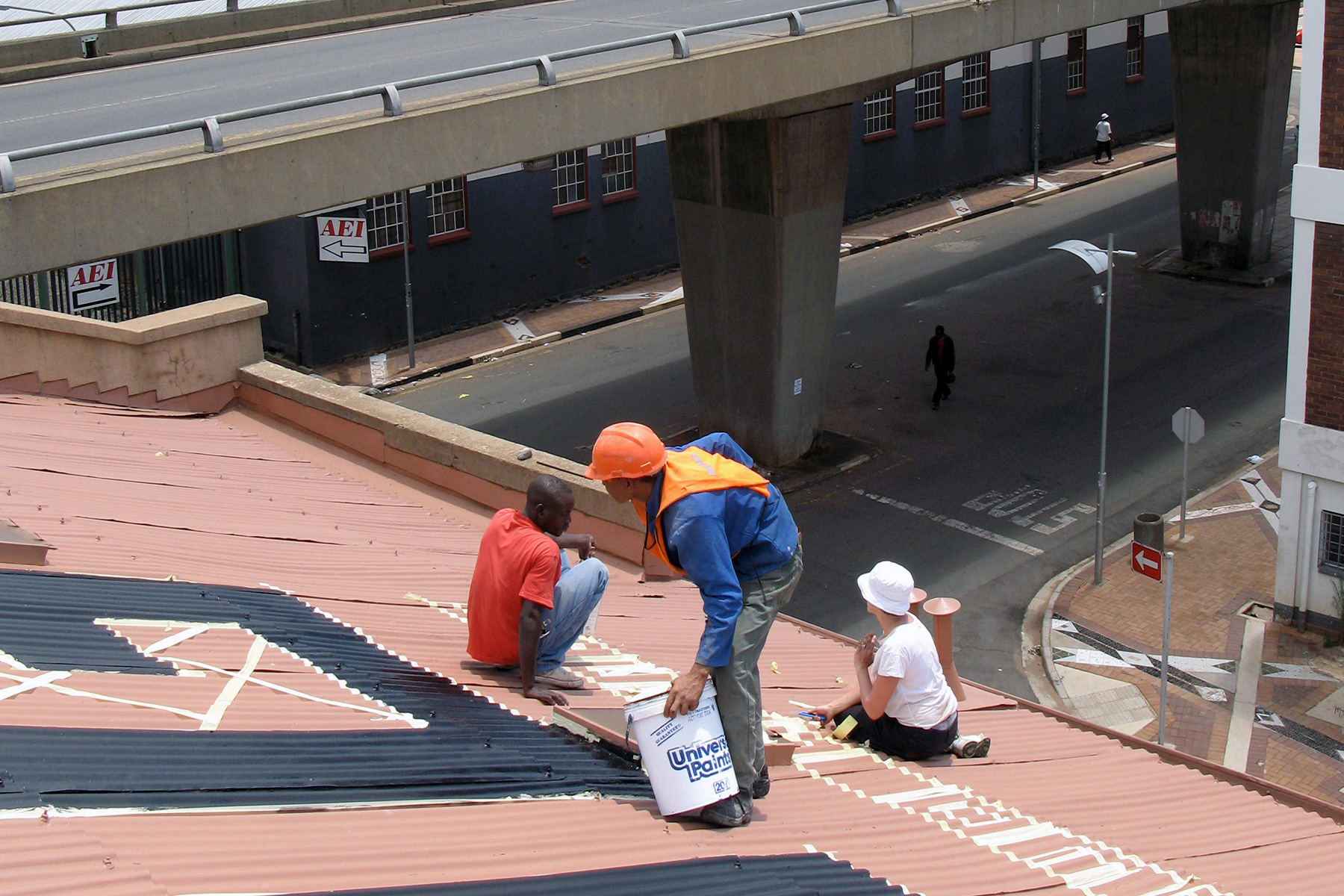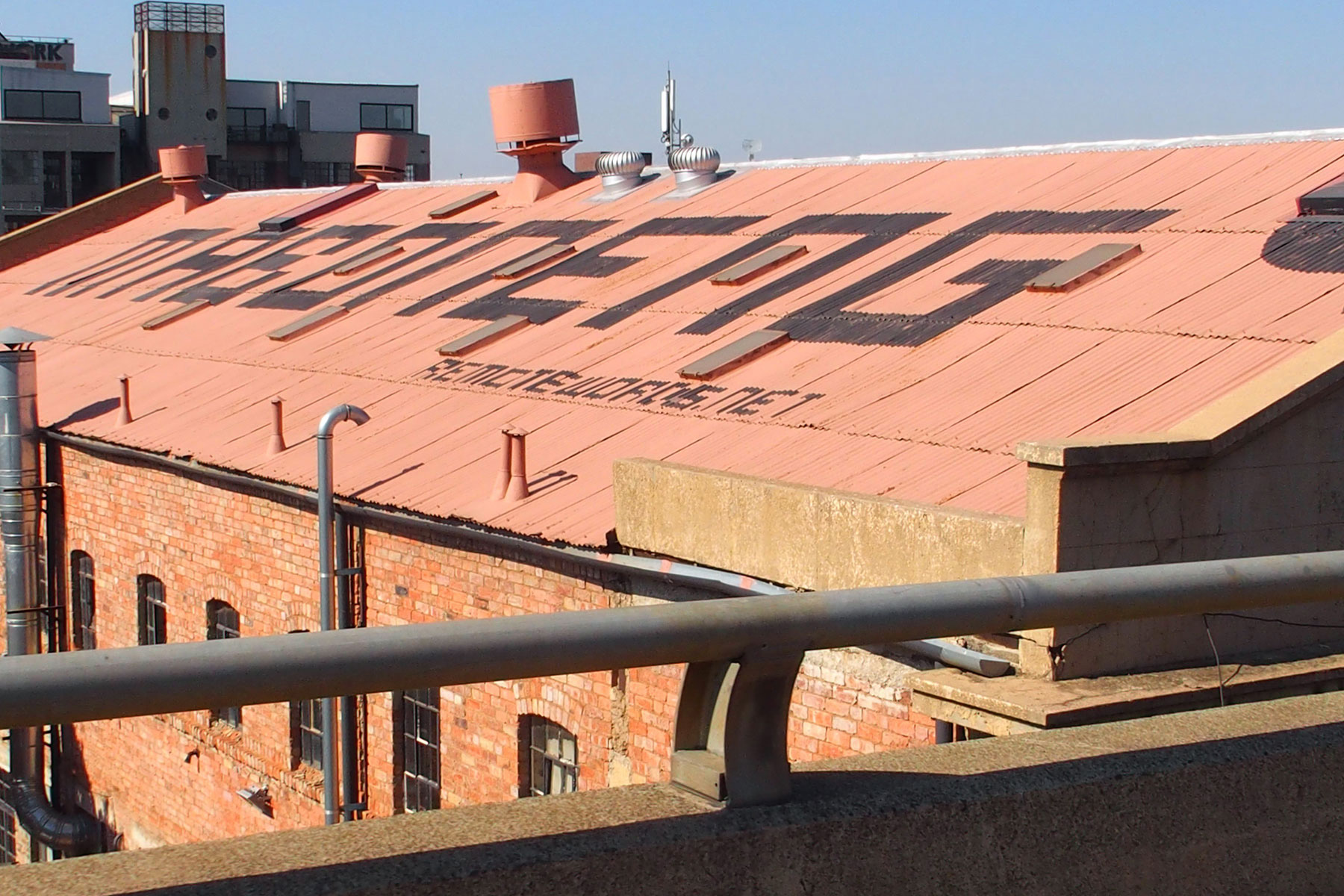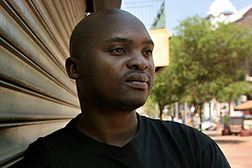The area around Main and Berea Streets in the Johannesburg district “Doornfountain” was given a new name after a message by REMOTEWORDS and Niq Mhlongo.
In February 2009, REMOTESWORDS—in collaboration with the South African writer Niq Mhlongo and Jozi art:lab (Johannesburg)—wrote on the roof of “Arts on Main”, then under construction, the message: MABONENG.
“Arts on Main” meanwhile, along with galleries, offers studio space to well-known artists such as William Kentridge and for several weeks has provided an off-space for Goethe Institute: GoetheonMain.
Maboneng means “place of light” and is a quotation from Niq Mhlongo’s novel “Aftertears” (2007). Mhlongo, who grew up in Soweto during the apartheid era, has made a name for himself with his descriptions of present-day life in the former ghetto. Thus Maboneng not only thematizes an aspiring district in Johannesburg that is to be given a shot in the arm by a colony of art, but is above all a reminder of those who for a very long time were prevented from standing tall in the light.
Installed | Location | GPS: 09-02-2009 | maboneng precinct former Arts On Main, Johannesburg, South Africa | -26.20449,28.0576329
Author | Words | Curator: Niq Mhlongo | MABONENG | Indra Wussow, Sylt Foundation
Roof Size | Font Size: 272qm | 3m x 22m
On Air: Google Earth 1-2012
Interview
MSAWAWA – ARTMIGRATION – MABONENG | Niq Mhlongo and Indra Wussow, Soweto 2009
MABONENG
REMOTEWORDS: Niq, Maboneng is one of the many non-English words that appear in your books “Dog eat Dog“ and “After tears“. Where does “MABONENG“ derives from, what does it mean and why do we find it on a roof in Doornfontain?
Niq Mhlongo: Maboneng literally means “place of light“. With the discovery of gold in 1886, the year Johannesburg was founded, the city attracted migrant workers from all over the world, who sought light and tried to find their fortune in Jozi Maboneng. “Maboneng“ derives originally from the Sotho languages but now is used by all indigenous South African language groups. Doornfontein as one of the first parts of Johannesburg was one of the few culturally mixed areas until 1934, when the people were moved to Sophiatown. The identifying feature of the place was one of cultural diversity and coexistence of different groups. This placed attracted all those people who sought freedom, cultural expression and enlightenment (the Marabi Dance, its language called Tsotsitaal and the shebeens originated from this place and migrated to different areas later).(Tsotsi = villain, shebeen = Beer Bar)
REMOTEWORDS: People where forcefully removed from Doornfountain to Sophiatown?
Niq Mhlongo: Yes at that time people migrated their culture to Melville. But the reason why people were moved out was that they wanted to prospect more gold in Doornfountain.
So Jo’burg was a place of Gold. People from Malawi, from Mosambique and from the rural parts of South Africa came to the place of light. So Moboneng used to attract the people with light, the glimmer of gold, electricity and so on. And now the building is going to be a place of light in terms of arts.
REMOTEWORDS: Light is maybe the most important metaphor in the arts. In painting, sculpture, lime light, projection beam…
Niq Mhlongo: And light presents hope.
REMOTEWORDS: That’s right. Furthermore during the discussion of MABONENG we took the important question: Am I in the place of light or do I see it just from outside? We just did this workshop in Kliptown where people still live without electricity.Can you tell us about Kliptown where lots of people are still sitting in the dark.
Niq Mhlongo: You are quite right actually. Light means hope but in Kliptown for example some of the main problems are not solved yet: the problem of infrastructure and lacking development. That is a pitty for Kliptown with all the history. Because Kliptown was the place where our constitution was firstly thought about in 1955. The freedom carta was born there.
REMOTEWORDS: Was’nt Mandela hidden in Kliptown also?
Niq Mhlongo: Yes. So it is very historic but the development is really slow and it is not happening where it matters most. They still use the budget system when coming to sanitation, the houses are still informal and so on. There is much more development in Doornfountain the revival of the city has begun already as we express with MABONENG. But not so in Kliptown. So in terms of light: there is not light in Kliptown.
REMOTEWORDS: Indra, Niq, thanks so much for the great collaboration.



